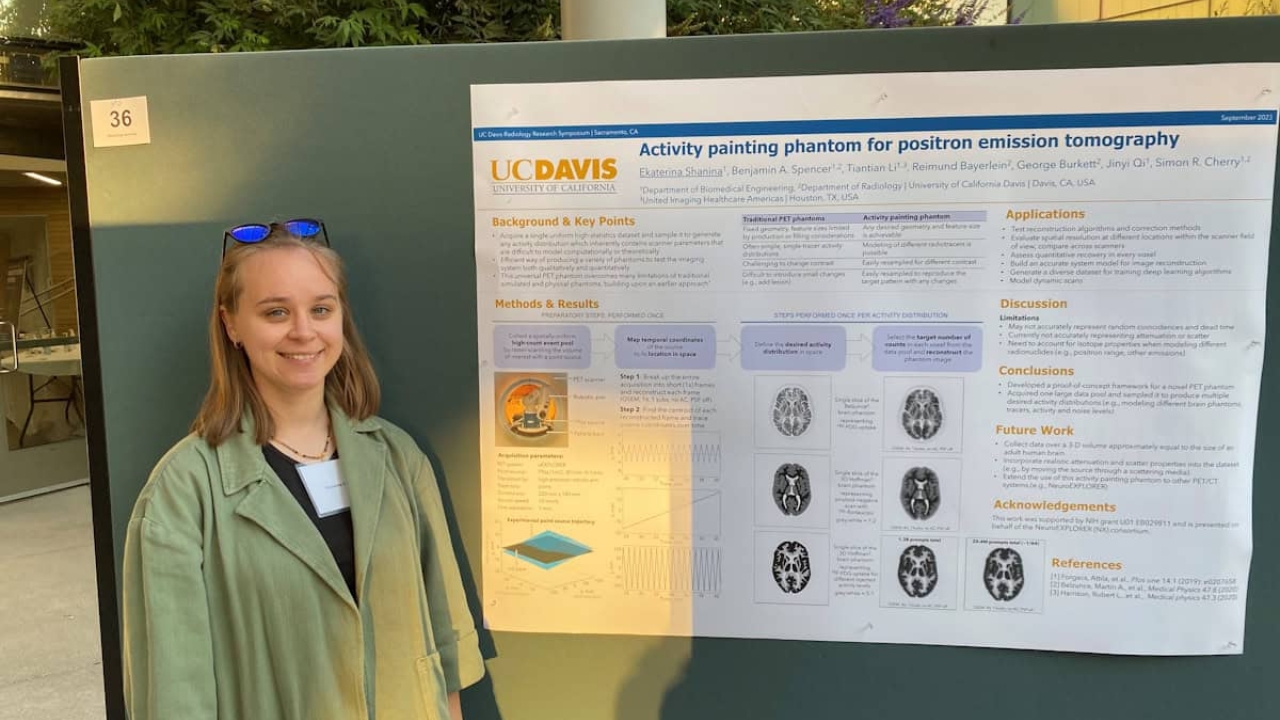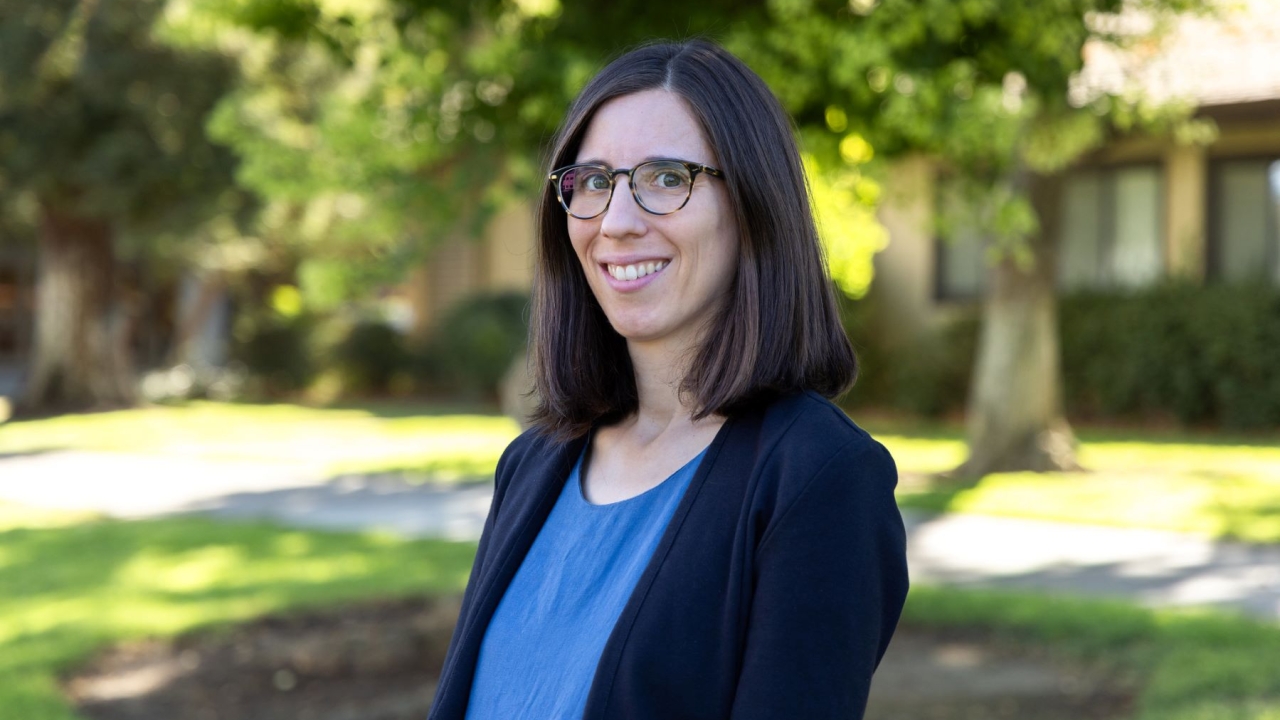One Month in a Floating Village
Engineering Students Design Sanitation Systems in Cambodia
By Kelley Weiss
DAVIS, Calif.; November 4, 2016–A team of UC Davis engineering students and a nonprofit in Cambodia are working together to clean up the water in the Tonle Sap Lake, one of the world’s most productive freshwater fisheries. The three mechanical engineering undergraduates — Joanne Wu, Rachel Muradian, and Yao Guan — spent the month of August installing sanitation systems they refined at UC Davis on the largest lake in Southeast Asia.
These devices will provide floating villages with individual septic systems that can be installed in homes. Currently the disposal of human waste goes straight into the lake that provides millions of people in this region with their homes, food and livelihood.
Staying healthy when your life is on the water
Imagine almost 100,000 people living in clusters of densely populated floating villages with houses and schools built on top of large raft-like structures. While the inhabitants have created communities on the water, they don’t have the luxury of electricity or plumbing. Fecal matter dumped into the lake festers and grows harmful bacteria in the same water that people drink, cook and bathe in.
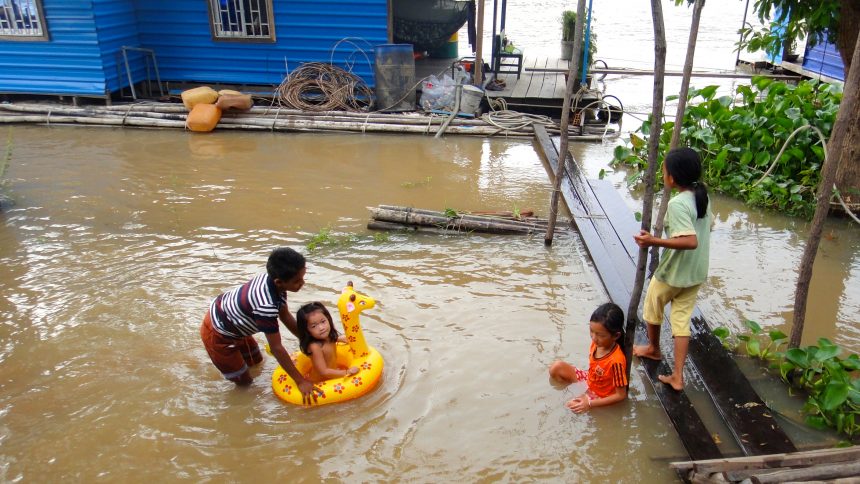
Jason Moore, lecturer in the UC Davis Department of Mechanical and Aerospace Engineering, is the faculty advisor for the student team working on the sanitation project. He says now that so many people live in the floating villages, the lake can’t absorb this volume of human byproducts.
“In the past when we didn’t have as many people on the planet this wasn’t an issue,” he says. “But as soon as you get this density of people you have problems. We’re seeing a lot of stomach-related illnesses due to giardia and E. coli.”
This form of waste disposal not only hurts the humans living on the lake, but also disrupts the health of the lake’s ecosystem. Tonle Sap has more than 150 fish species, the world’s largest freshwater snake population, and is home to several globally threatened birds. The Mekong giant catfish also lives in the lake and is one of the largest freshwater fish in the world. And in 1997, Tonle Sap Lake was designated a UNESCO Biosphere Reserve.
During monsoon season Tonle Sap, which flows into the Mekong River, more than quadruples in size, creating a huge wetland that sustains the region and country of Cambodia. According to Conservation International, Tonle Sap and Cambodia’s inland fisheries produce 500,000 tons of fish a year. This fish production accounts for more than two-thirds of Cambodia’s protein consumption and is an estimated $2 billion industry.
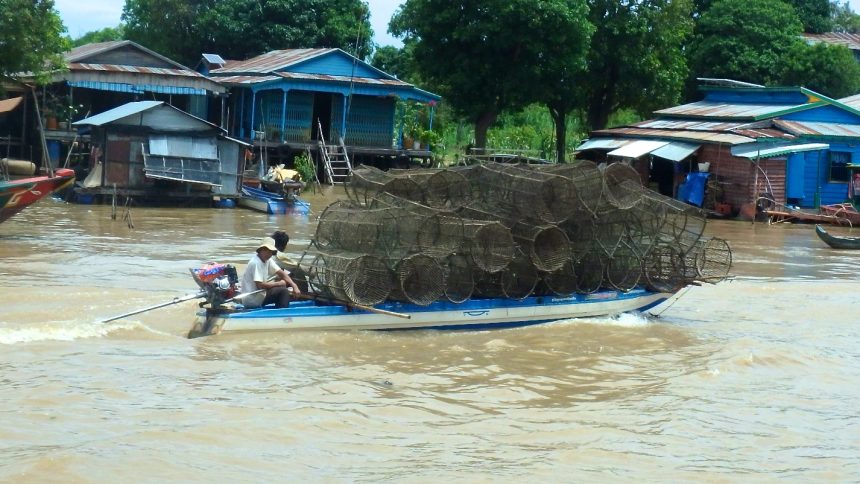
With such a great variation in water levels, a floating village during the wet season can become a town waylaid on land during the dry season. The people living in the floating villages choose to make their home on the water mainly because they need to fish all year. The wildlife from the lake feeds their families and also gives them a source of income. It’s difficult to fish during the dry season when their houses are much farther from the water, so the villagers have devised a way to move with the water levels, similar to a floating dock.
Building a sanitation system without a plumbing infrastructure
Moore says the students started their collaboration with Wetlands Work!, a nonprofit that designs wastewater treatment solutions, in the fall of 2015. Moore knew a senior engineer at the organization, Irina Chakraborty, who is a UC Davis alumna with a Ph.D. in Civil and Environmental Engineering. The students took on a senior project to improve a sanitation system for floating houses.
Wetlands Work! says that by designing ecologically engineered water treatment processes it can transform domestic sewage into improved water that can help sustain the millions of organisms living in the lake. It can also provide an affordable solution to sanitation for off-the-grid rural areas where poor, underserved populations live.
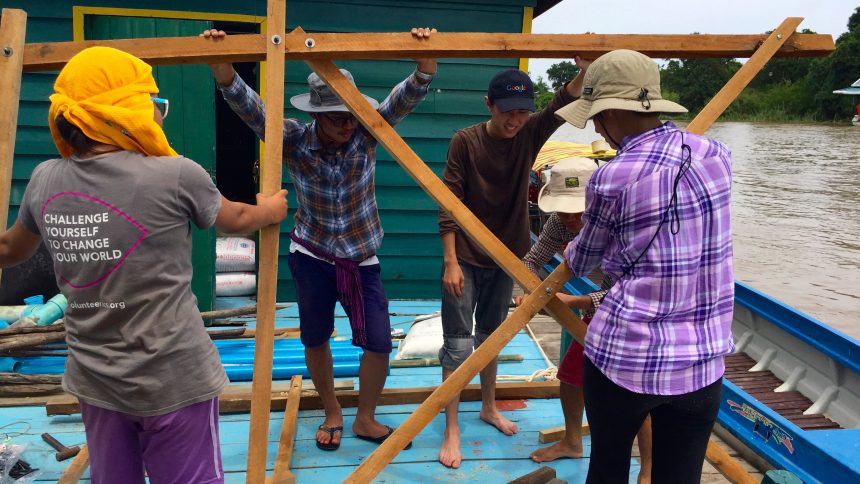
Initially the students were tasked with fixing some mechanical deficiencies with an existing product the organization created, called the HandyPod. The low-cost system took human waste and filtered it through a tank that created an anaerobic process to kill harmful bacteria. The sewage then would flow into a floating plant bed with hyacinth plants that eat the same nutrients bacteria need to survive. When finished, the process killed 99 percent of the harmful pathogens, like E. coli.
But Moore says that the HandyPod had problems. He says it was built with cheap materials to keep costs down. The pipes that connected the tank to the floating plant bed would often break apart because the system was attached to a floating house.
“The structural integrity was not sufficient for holding the weight and dealing with the waves,” he says.
Overcoming cost and cultural barriers
Moore says that one of the most valuable lessons the students learned was how to design appropriate technologies for different cultures. He says they were put to the test when the students learned that the HandyPod had an unexpected design defect.
“The residents of the floating villages failed to keep the plants alive in the original design by Wetlands Work!,” Moore says. “When foreign entities propose a design solution for a community they all too often miss major cultural constraints and the otherwise great design fails.”
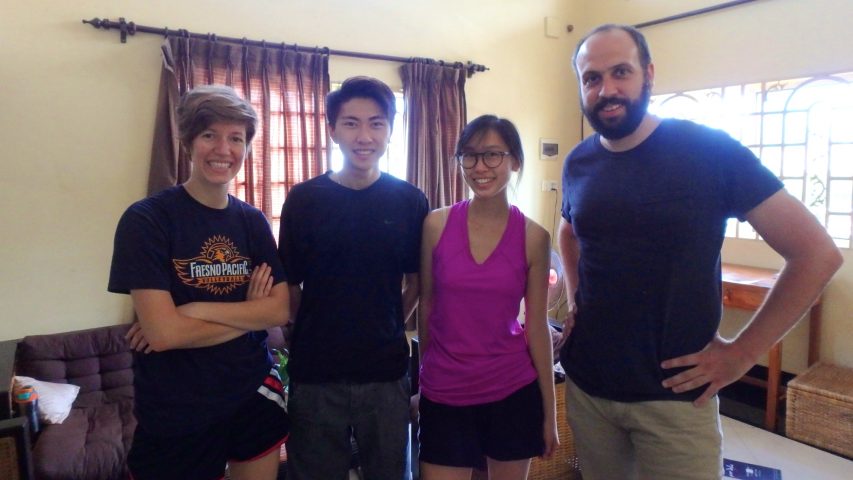
He says that when the dry season hit, residents didn’t water the plants and they would die. And that resulted in the filtration process breaking down and not removing the bacteria and pathogens from entering the water.
So two months before the students were to travel to Cambodia they were informed that Wetlands Work! had changed the design. And this meant the students had to redesign their structural improvements.
Now instead of using a plant bed, the systems use small pieces of Styrofoam in a 50-gallon drum to produce the same type of process to kill the bacteria.
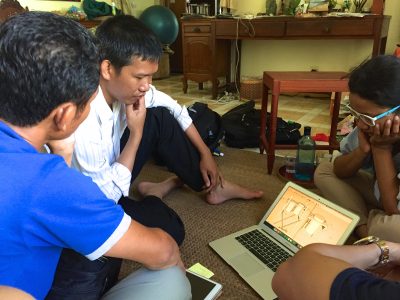
Once the design was completed, the students made the long trek to Cambodia to implement their solution in the village of Khum Phat Sanday. The UC Davis Blum Center for Developing Economies funded each student’s travel with a $2,000 Poverty Alleviation Through Action (PATA) grant and Moore joined the students for the first 10 days of the trip.
But once they arrived in Cambodia, they faced another obstacle. Many of the houses on the lake were built on stilts.
Within one month the students worked with local engineers at Wetlands Work! to create five design solutions for a sanitation system compatible with the houses on stilts in addition to redesigning the system for floating houses.
And, Moore says, they were able to dramatically reduce the price of the floating system — in some cases from a cost of $75 dollars down to $25.
Engineering a way to improve global health

In the end, Moore and the students saw firsthand what it takes to innovate low-cost solutions to improve basic health and sanitation practices in a developing country.
One of the engineering students, Yao Guan, says he learned that you can never be fully prepared when implementing a design. And he says, most importantly, he saw that his work can have a lasting impact.
“Locals rely heavily on the lake for their livelihood, so sanitation along the lake is imperative to provide good health and living conditions,” Guan says. “Working on this project gave me great joy and pride because I can finally utilize my engineering knowledge to help others.”
Wetlands Work! will now continue to develop the students’ designs and install the sanitation systems in Tonle Sap’s communities. Looking forward, Moore says depending on the needs of the nonprofit, more mechanical and aerospace engineering students may partner with the organization again for their senior design projects.


